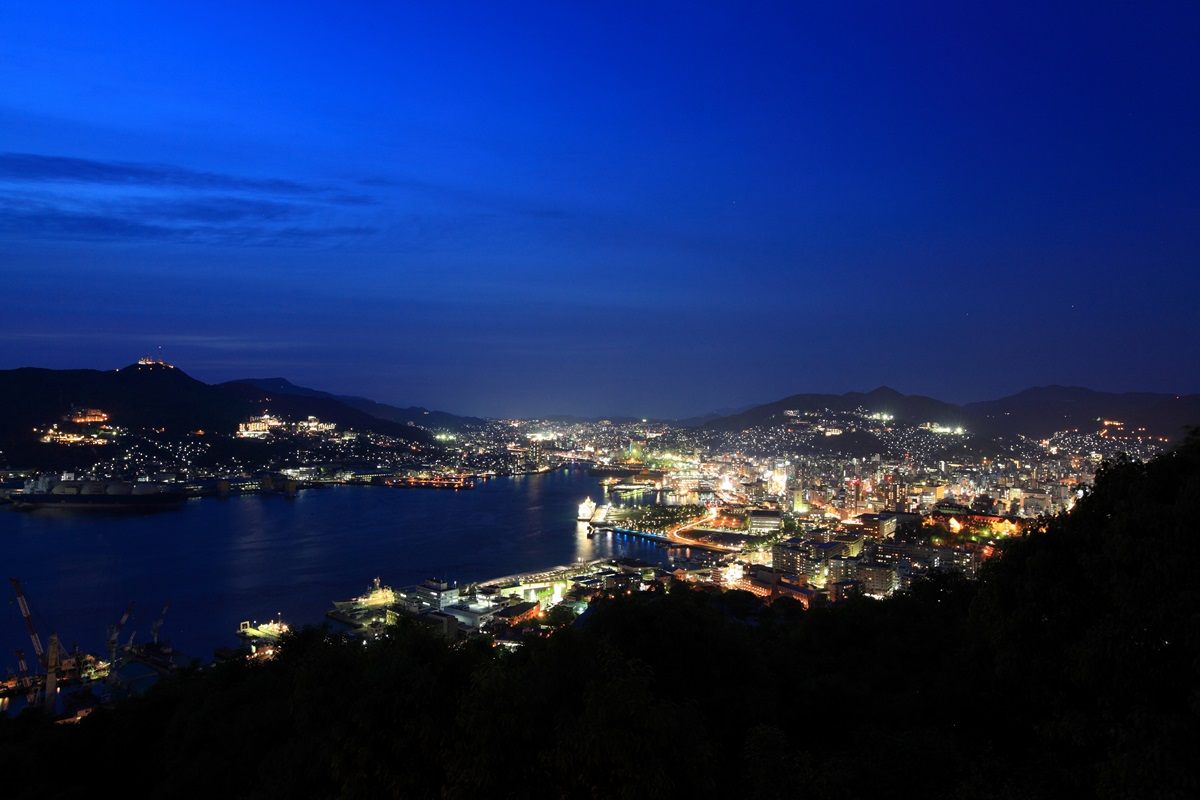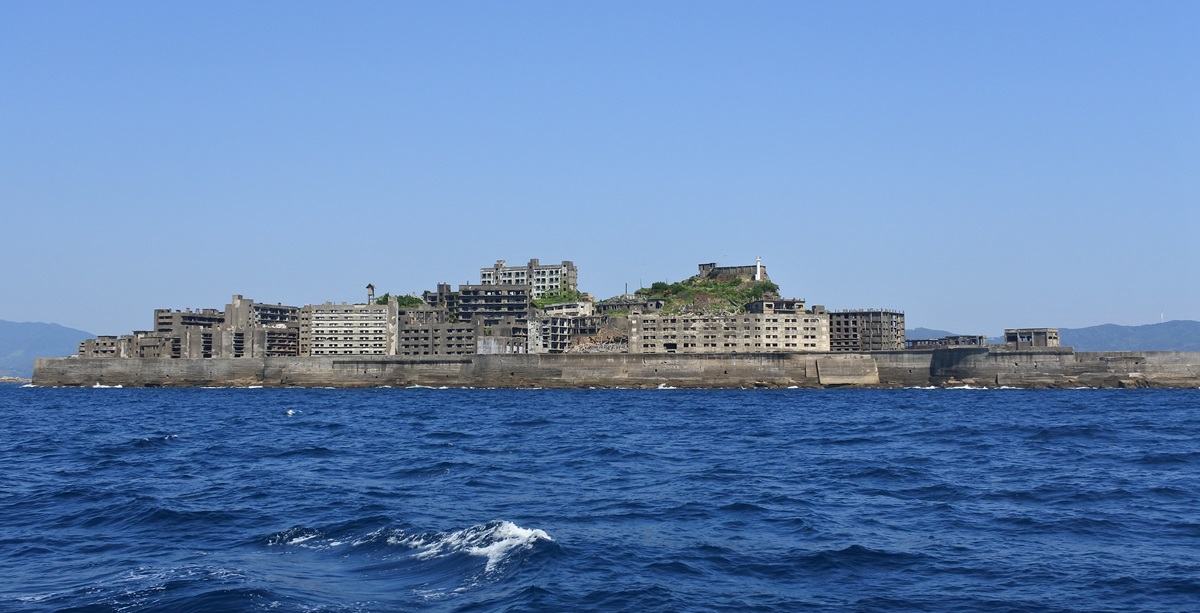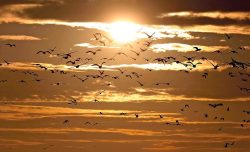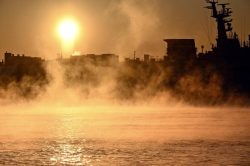
A night view of Nagasaki from Mt. Nabekanmuri

14:00 JST, December 16, 2023
Nagasaki shines most brilliantly during winter. The city boasts a cultural history nurtured by international exchange and an industrial heritage of modernization that ran through the final years of the Tokugawa shogunate into the ensuing Meiji period (1868-1912). And Nagasaki is blessed with geographical wonders such as colorful sandy beaches and an abundance of hot springs.
The city is also famed for its great night views. Visitors can take in its “$10 million” nighttime scenery, which has been called one of Japan’s — and the world’s — three most spectacular night views.
Mt. Nabekanmuri, a hill in the shape of an overturned pot that peaks at 169 meters, is a good spot to view the city. The hill, often called Mt. Nabekaburi by locals, has an observation deck with walkways.
Nagasaki is beautiful during the daytime as well. One attraction is Glover Garden, a museum featuring six Western-style houses where foreigners lived in the Meiji era. It includes the Glover, Ringer and Ort houses, which have been relocated and restored.
The garden is studded with features that evoke a time when Nagasaki was an enclave for Westerners in Japan, such as Western-style houses, cobblestone paths and stone walls. There are many slopes in the garden, but escalators and gentle gradients make it easy for visitors to move around.
There is also a popular spot in the garden where all of Nagasaki Port can be viewed with Mt. Inasa in the background.

Counterclockwise from top left: Glover House, Higashi Yamate No. 13 Hall and Obama Onsen Ashiyu Hot Foot 105, a hot spring foot spa
Higashi Yamate No. 13 Hall, a Western-style house standing on the west side of Orandazaka, or the Dutch Slope, is an example of a typical building in the foreigners’ enclave. Admission is free. There is a cafe on the first floor of the two-story wooden house, where visitors can relax and enjoy a cup of Dutch coffee and castella sponge cake sandwiches.
Nagasaki City is also a starting point for trips to some notable tourist spots in Nagasaki Prefecture, such as Hashima, a small island nicknamed Gunkanjima (Battleship Island), and Garasu no Sunahama (Glass beach) at Omura Bay near Nagasaki Airport.

Another destination a bit further from Nagasaki City is Shimabara Peninsula. Here you will find Obama Onsen Ashiyu Hot Foot 105, which is Japan’s longest foot spa at 105 meters long. The number 105 in the name not only reflects the length of the hot spa, but also the temperature at the spring’s source (105 C).
There are foot spas designed as walking paths, with one for pets. These can be used free of charge. Adjacent food steamers let people cook seasonal fish and vegetables while they relax.
At sunset, people can rest their tired feet in the spa water and watch the sun go down in Tachibana Bay.
A visit to Nagasaki City and the rest of the prefecture in winter offers a chance to see them at their peak beauty, with spectacular scenery, rich history and delightful hot springs.

Hashima (Gunkanjima)
Battleship island
Hashima is a former mining island. The nickname Gunkanjima (Battleship island) comes from the fact that the island is shaped like the battleship Tosa. The mine, which closed in 1974, was registered as one of the “Sites of Japan’s Meiji Industrial Revolution” in a UNESCO World Heritage list in July 2015.

Garasu no Sunahama (Glass beach)
Glass beach

Garasu no Sunahama (Glass beach)
In 2016, the Nagasaki prefectural government finished installing a new beach, with sand made from recycled glass to improve water quality in the bay. The beach’s multicolored glass sand glitters brilliantly in the sunshine.
***
Japan Tourism is presented in collaboration with Ryoko Yomiuri Publication, which publishes Ryoko Yomiuri, a monthly travel magazine. If you are interested in the original Japanese version of this story, click here.
"Features" POPULAR ARTICLE
-

Sanrio to Open Museum in Yamanashi Pref. Dedicated to Founder, Exhibits Include Hello Kitty, Other Characters
-

Autumn Foliage Surrounds Visitors to Tokyo’s Showa Kinen Park
-

My Daughter No Longer Speaks to Me, But I Want to See Her and My Grandchild
-

Kumamoto: Public Bath Refurbished as Library Where You Can Chat, Take Photos
-

Frozen Vegetables: Demand Rises for Convenient, Tasty Domestic Produce
JN ACCESS RANKING
-

Tokyo Economic Security Forum to Hold Inaugural Meeting Amid Tense Global Environment
-

Keidanren Chairman Yoshinobu Tsutsui Visits Kashiwazaki-Kariwa Nuclear Power Plant; Inspects New Emergency Safety System
-

Imports of Rare Earths from China Facing Delays, May Be Caused by Deterioration of Japan-China Relations
-

University of Tokyo Professor Discusses Japanese Economic Security in Interview Ahead of Forum
-

Japan Pulls out of Vietnam Nuclear Project, Complicating Hanoi’s Power Plans



























